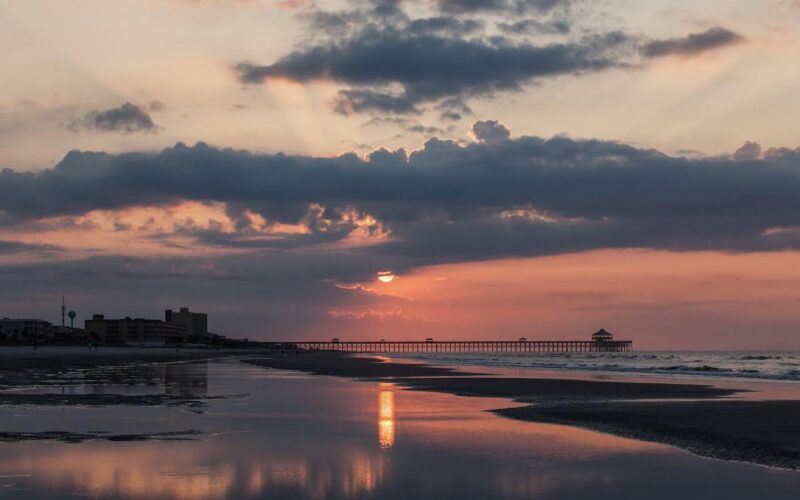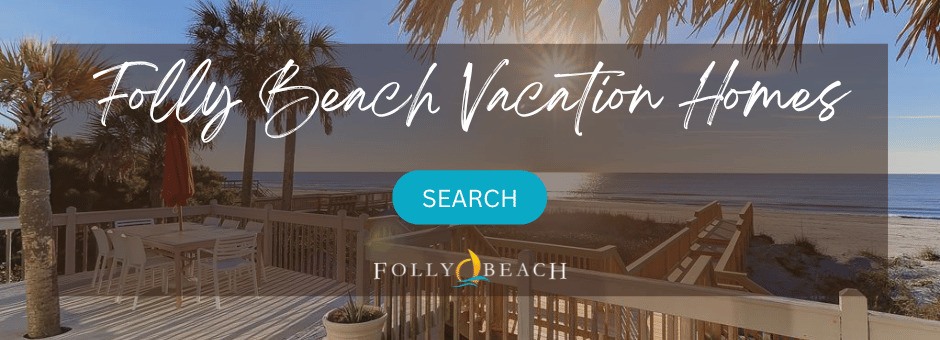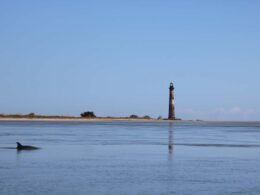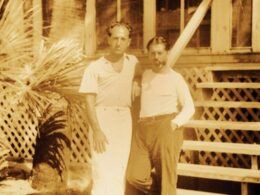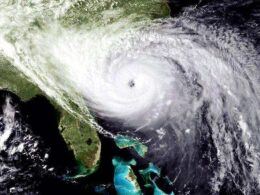You probably know about Charleston’s grand antebellum history, but few realize that Folly Beach — “The Edge of America” — has an equally fascinating story of its own. From pirates and shipwrecks to Civil War encampments, jazz-age boardwalks, and the birth of South Carolina surfing, Folly has long been a place where beauty and rebellion coexist in perfect balance.
The Early Days: Pirates and Isolation
The earliest known record of Folly dates back to 1696, when the land was deeded as a royal grant by the British Crown. At the time, the island was called Coffin Island, likely named after the Coffin family of Charleston or, according to local lore, for the coffins once washed ashore from shipwrecks.
In those early years, Folly was remote, dense, and wild — a perfect hideaway for pirates operating off the South Carolina coast. The nearby shipping lanes made the area a notorious graveyard for ships, including the brig Amelia, which wrecked here, leaving behind one of the many legends woven into Folly’s sands.
The name “Folly,” an Old English word meaning “dense foliage,” came naturally. Early visitors and settlers described the island as overgrown and jungle-like, full of lush vegetation, palmettos, and maritime forest.
Civil War and the Transformation of Coffin Island
During the Civil War, Folly’s strategic position — just south of Charleston and a short distance from Fort Sumter — made it a critical location for Union troops. Thousands of soldiers set up encampments along the island’s ridges and dunes, turning the wilderness into a military hub complete with makeshift roads and tent cities.
Interestingly, some of the roads constructed during this time remain part of Folly’s street grid today. The soldiers called the island “Folly,” both for its dense foliage and, perhaps, for the irony of fighting a war in such an otherworldly paradise.
Unlike nearby Morris Island, Folly saw little actual combat, but it served as the launching point for assaults on Charleston Harbor. The Morris Island Lighthouse — visible from Folly’s eastern shore — still stands as a silent sentinel from that era, connecting today’s beachgoers to its wartime past.
The Roaring ’20s: Bootleggers, Boardwalks, and Big Bands
By the early 1900s, Folly had evolved into a vibrant yet rebellious seaside retreat. The first pavilion went up in the 1920s, bringing music, dancing, and laughter to what was once an isolated barrier island.
Rumors swirled that Folly’s relative remoteness made it a convenient stop for bootleggers during Prohibition — a place where Lowcountry rum-runners could stash their cargo far from the watchful eyes of Charleston law enforcement.
In the 1930s, Folly’s popularity exploded with the construction of the Atlantic Pavilion, a boardwalk, a new pier, and the Oceanfront Hotel. Visitors came for the carnival rides, games, and seaside entertainment that made Folly one of South Carolina’s premier vacation destinations.
It was during this golden age that the island began to earn its nickname: The Edge of America.
That line, penned right here on Folly Beach, would go on to define the easy-going spirit that still echoes through the island today.
The Mid-Century Boom: Surfboards and Ocean Plaza
As the 20th century rolled forward, Folly’s accessibility improved. Better bridges, paved roads, and new utilities made it easier for families from Charleston and beyond to visit. The first surfboard appeared on Folly in the 1960s, ushering in a new generation of ocean lovers and marking the beginning of Folly’s surf culture that thrives to this day.
Around the same time, Ocean Plaza was built, stretching an impressive 1,700 feet along the beachfront. With a roller rink, arcade, pier, food vendors, and live music, it was the beating heart of Folly’s social scene — an era many locals now refer to as Folly’s Golden Age.
Fires, Storms, and Resilience
Folly’s growth wasn’t without challenges. In 1977, the island’s pier burned down — the cause never confirmed but suspected to be arson. It was rebuilt, only to face new trials in the decades ahead.
In 1985, the hotel at the end of Center Street (originally a Holiday Inn) was constructed to replace the Oceanfront. Just a few years later, Hurricane Hugo struck in 1989, devastating much of the island. Homes, dunes, and landmarks were damaged or destroyed, but true to form, Folly rebuilt — stronger and more determined than ever.
Today’s Folly Beach Pier stands as both a beloved fishing spot and a symbol of that resilience, having been rebuilt again in the 1990s and completely reconstructed in 2023 to meet modern storm standards.
The Folly of Today
Today, Folly Beach remains a blend of vacation destination, artistic retreat, and eclectic community. Locals, surfers, and visitors mingle easily among colorful cottages, cafés, and surf shops. You’ll still find echoes of the past — in the rhythm of the waves, the music drifting from Center Street, and the unshakable sense of independence that has defined Folly for centuries.
The island has seen pirates, soldiers, musicians, and hurricanes — yet somehow, it has held onto its soul. That’s what makes Folly special. It’s a place where history lingers not in museums, but in the sea air, the stories, and the people who call it home.
As locals often say, “There’s no place quite like Folly — and that’s exactly how we like it.”
Related Reading
Check the latest Folly Beach weather forecast before planning your next trip.
Explore the Folly Beach Pier and its role in the island’s history.
Visit the Morris Island Lighthouse, one of South Carolina’s most photographed landmarks.






